All products featured are independently chosen by us. However, SoundGuys may receive a commission on orders placed through its retail links. See our ethics statement.
Samsung Galaxy Buds 2 Pro vs Google Pixel Buds Pro
November 18, 2024
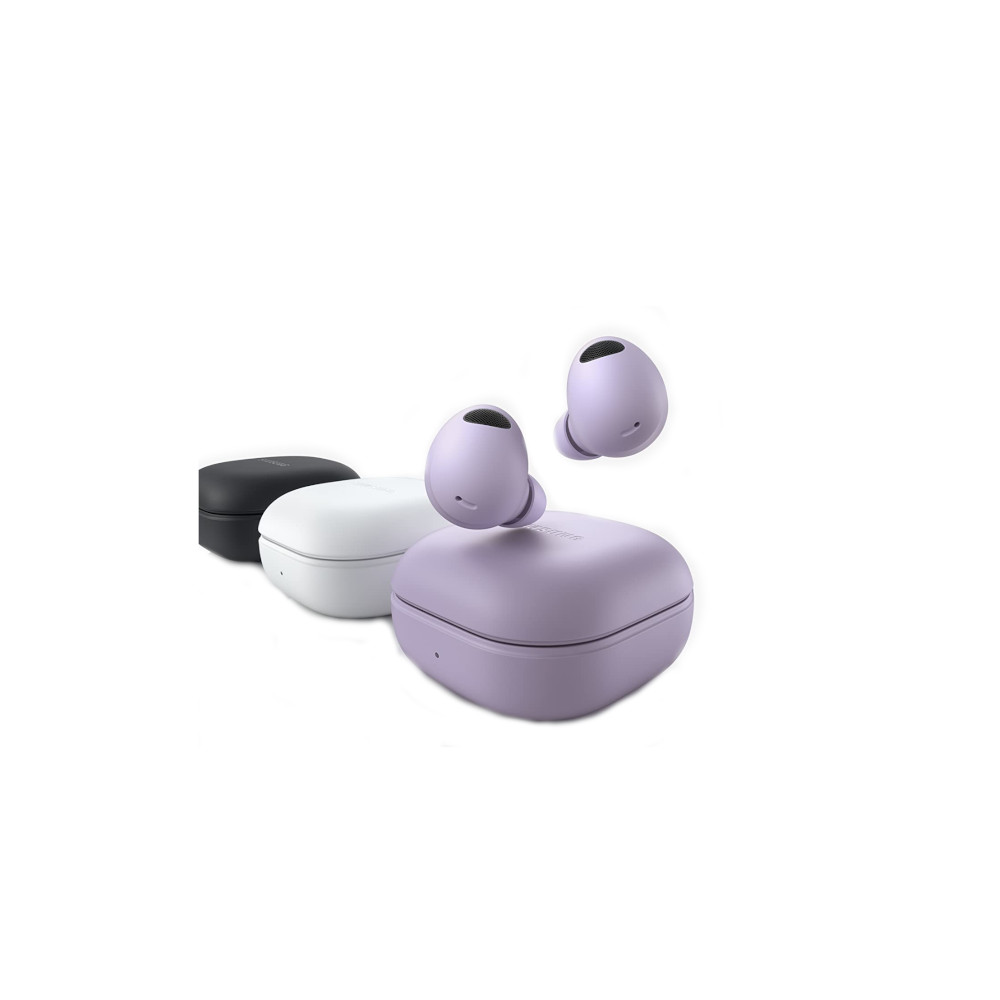

A couple of the biggest Android-oriented Bluetooth earbuds of the year are dropping around the same time. The Google Pixel Buds Pro and Samsung Galaxy Buds 2 Pro have some quirks, but they share more than a few features in common. Both offer some serious active noise cancellation (ANC) to pair with your hands-free smart assistant. Let’s dig in and see which prevails as the better choice for you.
Editor’s note: this post was updated on November 18, 2024, to include an updated Samsung Galaxy Buds 3 Pro vs Google Pixel Buds Pro 2 comparison.
What’s it like to use the Samsung Galaxy Buds 2 Pro compared to the Google Pixel Buds Pro?
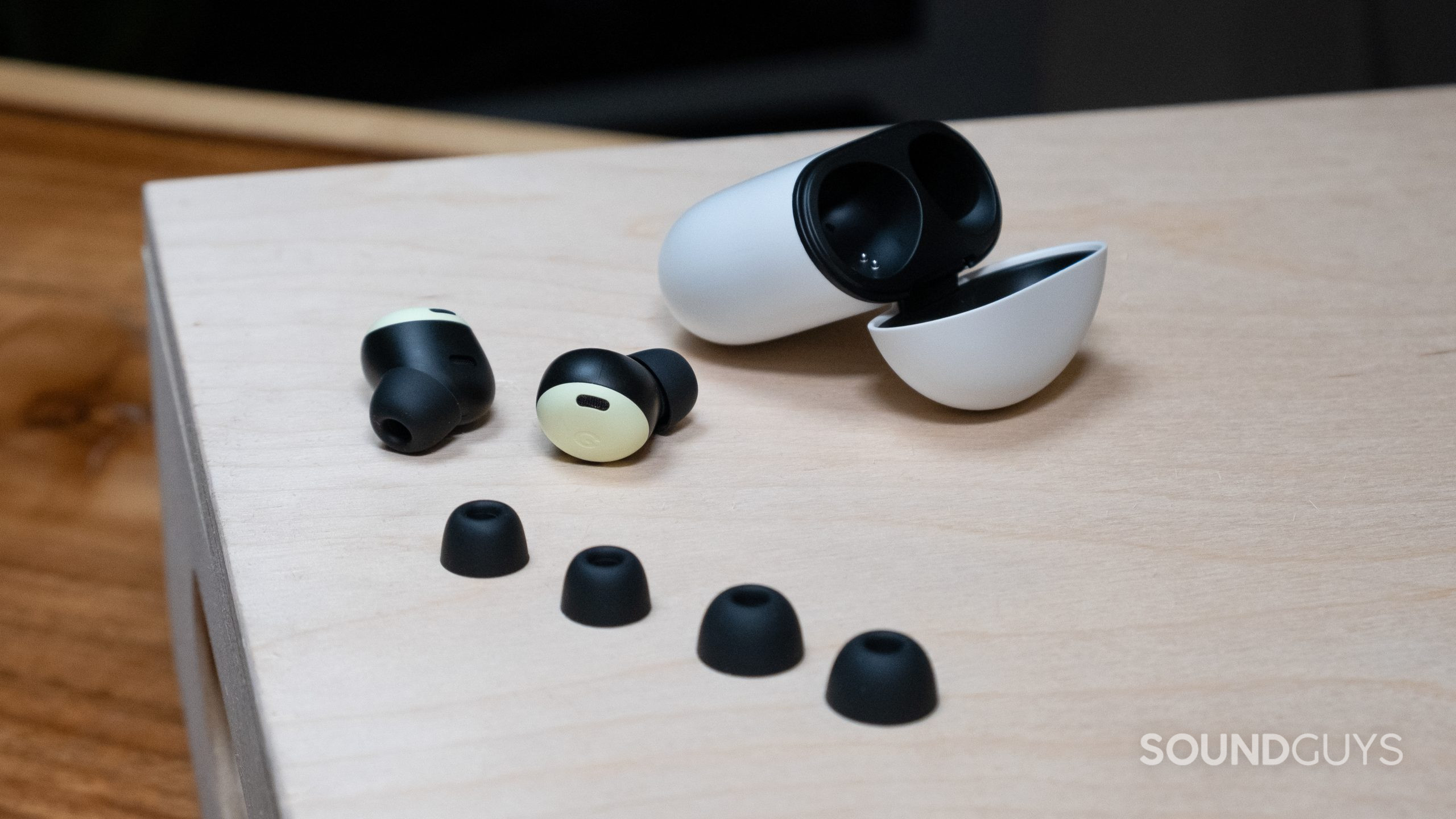
The Samsung Galaxy Buds 2 Pro does not look very different from the previous version, except it now comes in matte colorways. At 5.5g, each Galaxy Buds 2 Pro earbud weighs a little less than the also lightweight Pixel Buds Pro earbuds (6.2g each). Even without stabilizers or wings the Galaxy Buds 2 Pro stays put, which is important. The earbuds aren’t the most secure, but they sit in your ears a little better than the Pixel Buds Pro.
Both pairs of earbuds come with three sets of ear tips, which are easy to swap out. The Galaxy Buds 2 Pro feel extremely comfortable over long stretches of time, and so long as you don’t try to do jumping jacks they shouldn’t fall out. By contrast, the Pixel Buds Pro rates fine for comfort but the fit is looser. Annoyingly, the Google Fear tip fit test tends to say every ear tip is a “good fit” unless the bud is literally halfway out your ear.
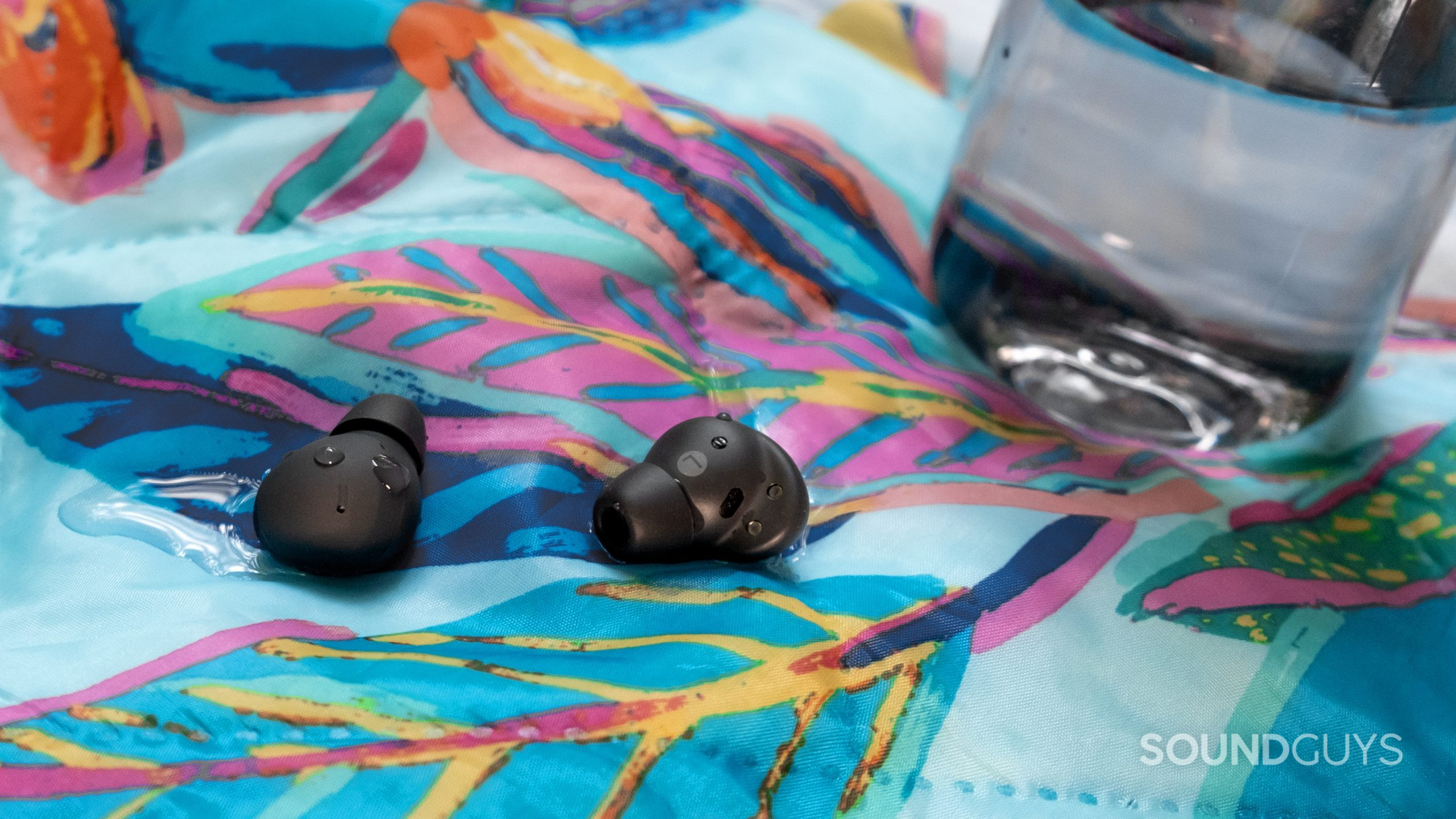
The Galaxy Buds 2 Pro comes with an excellent IPX7 rating against water, while the Google Pixel Buds Pro has a lesser IPX4 rating for sweat protection. Google also ensures the Pixel Buds Pro case has an IPX2 rating against splashes, which makes sense considering the odd raindrop that might land on it. Samsung hasn’t given the Galaxy Buds 2 Pro case any IP rating.
Both cases otherwise feel sturdy, although the Pixel Buds Pro case is more pocketable with its flattened egg shape. The squat case of the Galaxy Buds 2 Pro is by no means large, but its uniform thickness causes it to bulge in a pocket more easily.
How do you control the Samsung Galaxy Buds 2 Pro and Google Pixel Buds Pro?
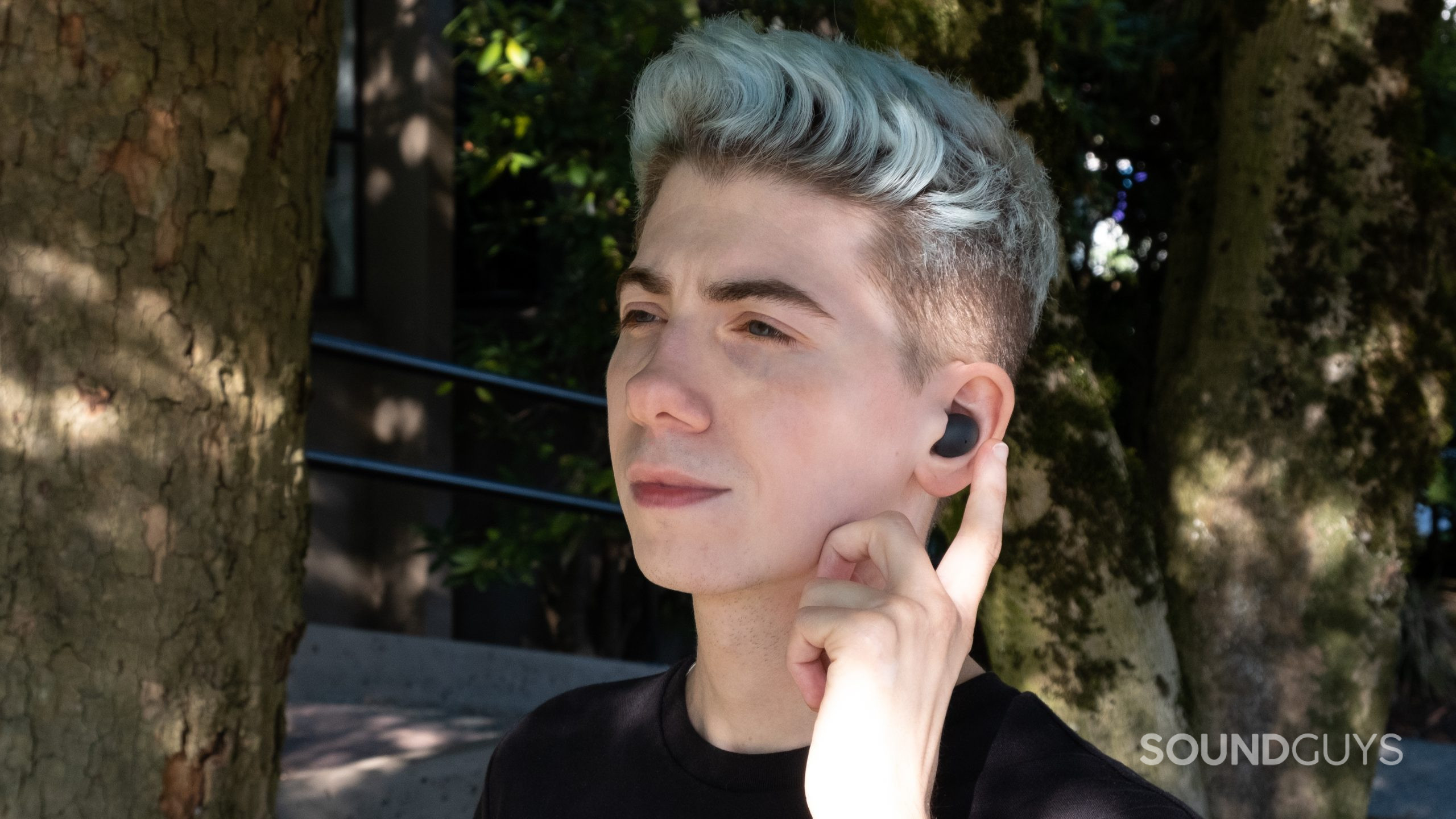
Like the previous generation, the Samsung Galaxy Buds 2 Pro uses virtually the same tap controls across the rounded rubbery surface. Fortunately, the touch panel now has more appropriate sensitivity, so commands tend to register as intended. Whether the flat panel of the Pixel Buds Pro or the round panel of the Galaxy Buds 2 Pro is better really comes down to personal preference.
Samsung Galaxy Buds 2 Pro controls:
| INPUT | ACTION (left bud) | ACTION (right bud) |
|---|---|---|
| INPUT ONE TAP | ACTION (left bud) Play/Pause | ACTION (right bud) Play/Pause |
| INPUT TWO TAPS | ACTION (left bud) Next track Answer/end call | ACTION (right bud) Next track Answer/end call |
| INPUT THREE TAPS | ACTION (left bud) Skip to previous track Decline call | ACTION (right bud) Skip to previous track Decline call |
| INPUT TAP AND HOLD | ACTION (left bud) Volume down Reject call Toggle ANC/ambient modes (change in settings) | ACTION (right bud) Volume up Reject call Toggle ANC/ambient modes (change in settings) |
| INPUT "Hey, Bixby" | ACTION (left bud) Voice your request or inquiry (Samsung device only) | ACTION (right bud) Voice your request or inquiry (Samsung device only) |
You can’t customize a whole lot except for touch-and-hold gestures. Samsung limits you to allocating one “type” of command to this function for both ears. If you want the left for Spotify Tap and the right for volume increase, you’re out of luck.
Google debuts its swipe forward and backward volume gestures on the Pixel Buds Pro’s matte touch panels. While the matte texture feels premium, it provides some extra resistance. Combine that resistance with the already loose fit, and it can cause the buds to pull out when you swipe them. Swipe control is a neat feature, but it could benefit from a better fitting bud, or smoother textured touch panels for less resistance.
Google Pixel buds Pro controls:
| ACTION | EFFECT (music) | EFFECT (phone) |
|---|---|---|
| ACTION One tap | EFFECT (music) Play / Pause | EFFECT (phone) Answer call |
| ACTION Two taps | EFFECT (music) Next track | EFFECT (phone) Reject call |
| ACTION Three taps | EFFECT (music) Previous track | EFFECT (phone) |
| ACTION Tap and hold | EFFECT (music) Toggle ANC/transparency modes | EFFECT (phone) |
| ACTION Swipe forward | EFFECT (music) Volume up | EFFECT (phone) Volume up |
| ACTION Swipe backward | EFFECT (music) Volume down | EFFECT (phone) Volume down |
| ACTION "Hey, Google" | EFFECT (music) Voice your request or inquiry | EFFECT (phone) |
Like the Samsung Galaxy Buds 2 Pro, Google has a limited set of control reassignments available, but you still have more options with the Pixel Buds Pro. You can make an earbud to activate Google Assistant, determine what listening modes (of the three) to cycle through directly from the earbuds, and reassign some taps to other commands.
Should you use the apps of either Samsung Galaxy Buds 2 Pro or Google Pixel Buds Pro?
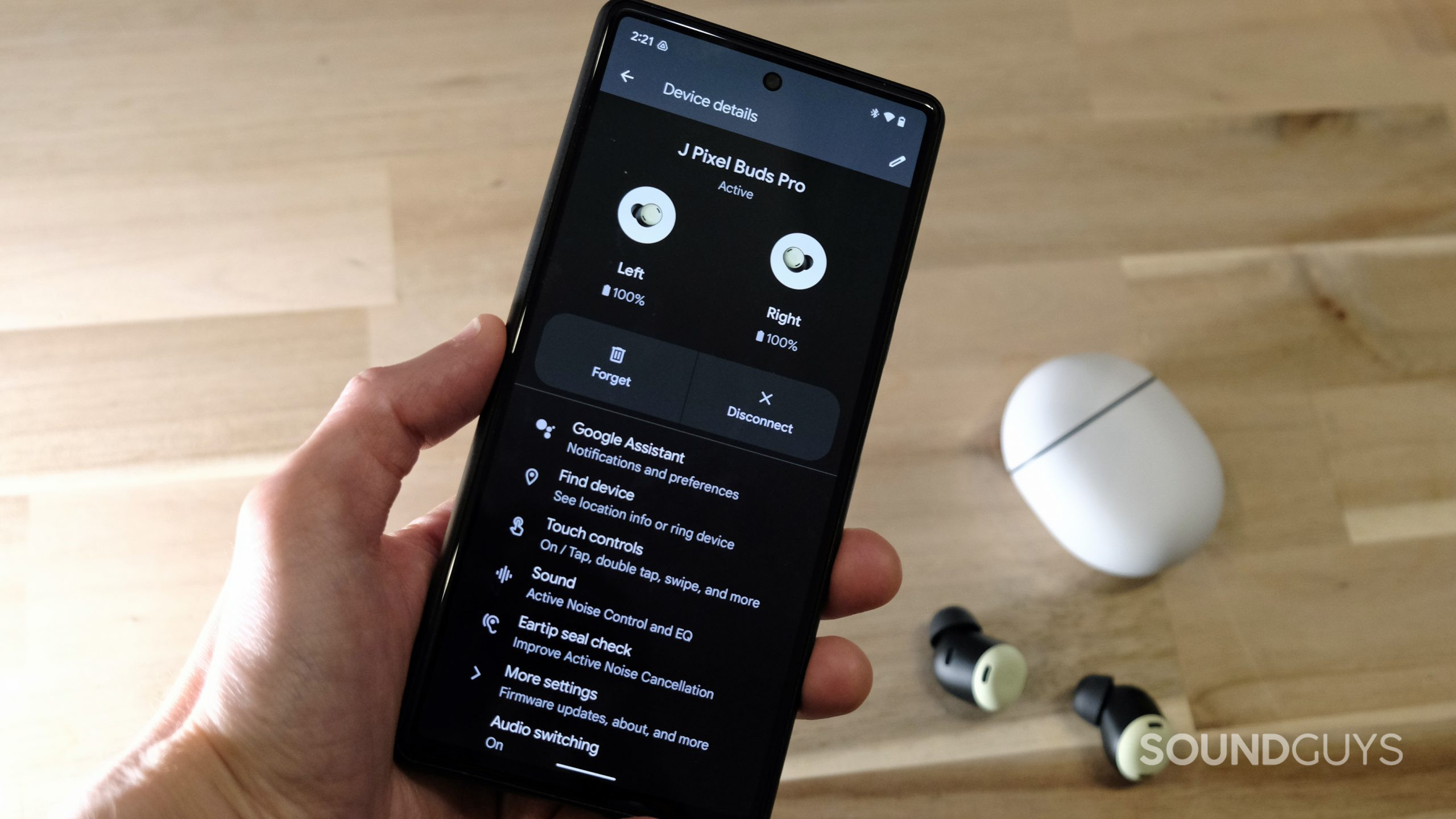
You might not have a choice whether you get the apps or not. If you have a Samsung device, it’ll automatically add the Galaxy Buds 2 Pro to the Galaxy Wearable app. You’ll then need to agree to a lot of data sharing. For updates alone, it’s worth having the app. You can choose different EQ presets, access Find My Earbuds, enable accessibility settings, alter ANC settings, do a fit test, and set up 360 Audio. It also has a hands-free voice assistant if you want that, defaulting to Bixby.
The app is exclusive to Android devices, with some features further exclusive to Samsung devices only, like 24-bit audio and device switching, which only works between Samsung Galaxy devices (One UI 4.0+) on the same Samsung account. You can even program the buds to read out notifications or have ambient mode on during a call to mimic a telephone’s sidetone.
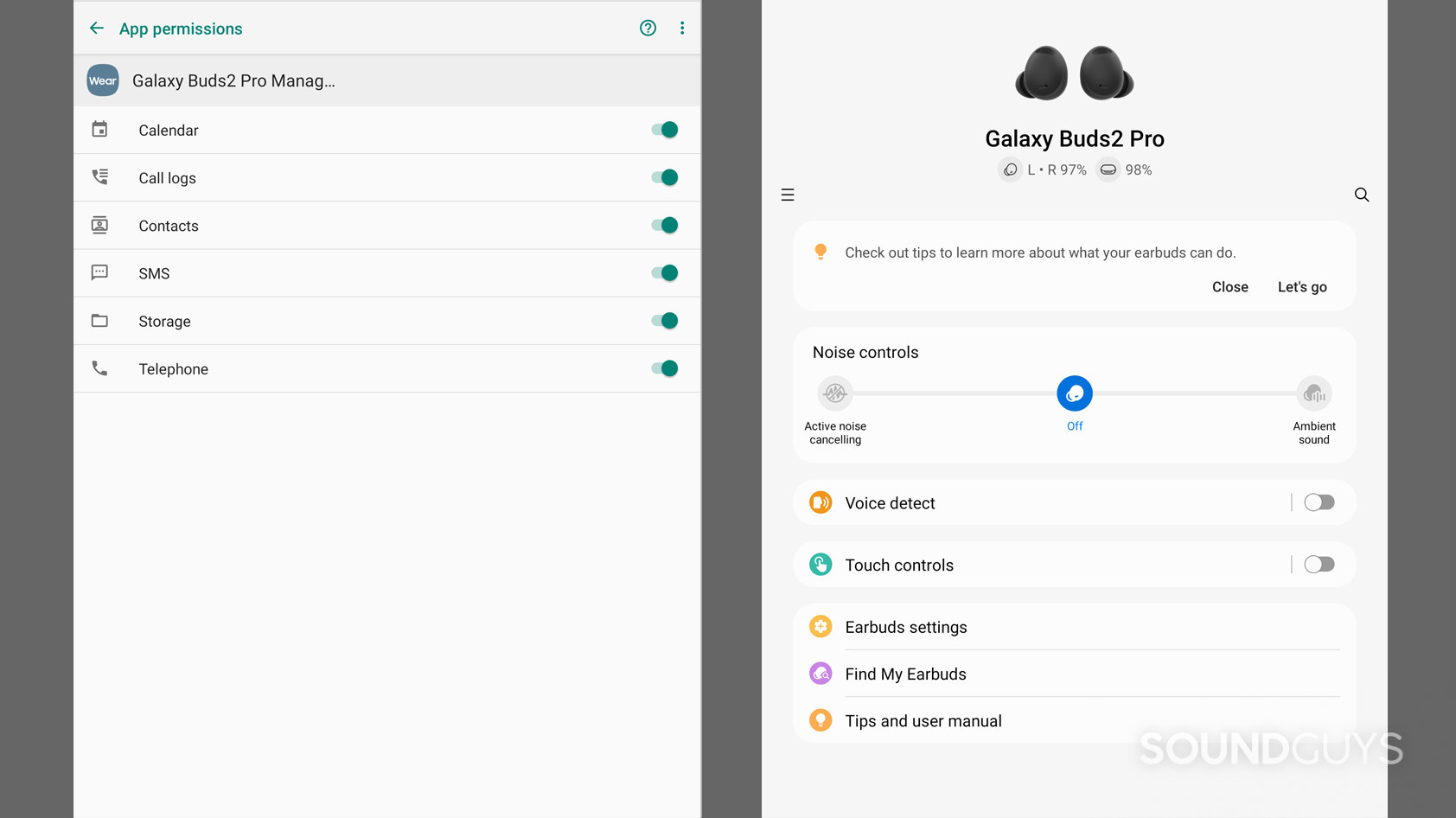
If you have a Google Pixel phone, you already have the app built in for the Google Pixel Buds Pro. The rest of us have to download the Pixel Buds app, which, like the Samsung Galaxy Buds 2 Pro and its companion app, only works on Android. It offers pretty similar functionality as the Galaxy Wearable app, like ANC adjustments, custom controls, hands-free voice assistant, Find my earbuds, an ear tip seal test, and EQ presets. In a recent update, Google added spatial audio with head tracking to the Pixel Buds Pro too.
Where the Pixel Buds Pro differs is including Volume EQ, which uses an algorithm to alter your EQ in response to the listening volume, and an integration of the Google Translate function on the fly.
A March 2023 update to the Google Pixel Buds Pro means you can now take Dolby 5.1 (not Dolby Atmos) mixed audio and make it spatial audio with head tracking using the app, however, you’ll need at least a Google Pixel 6 device, or a newer flagship Pixel phone.
Meanwhile, the Samsung Galaxy Buds 2 Pro needs a Samsung Galaxy phone with Dolby Atmos mixed audio. There’s head tracking, but it’s less pronounced. The upside of Samsung’s implementation is that you have more phones to choose from.
How do the Samsung Galaxy Buds 2 Pro and Google Pixel Buds Pro connect?
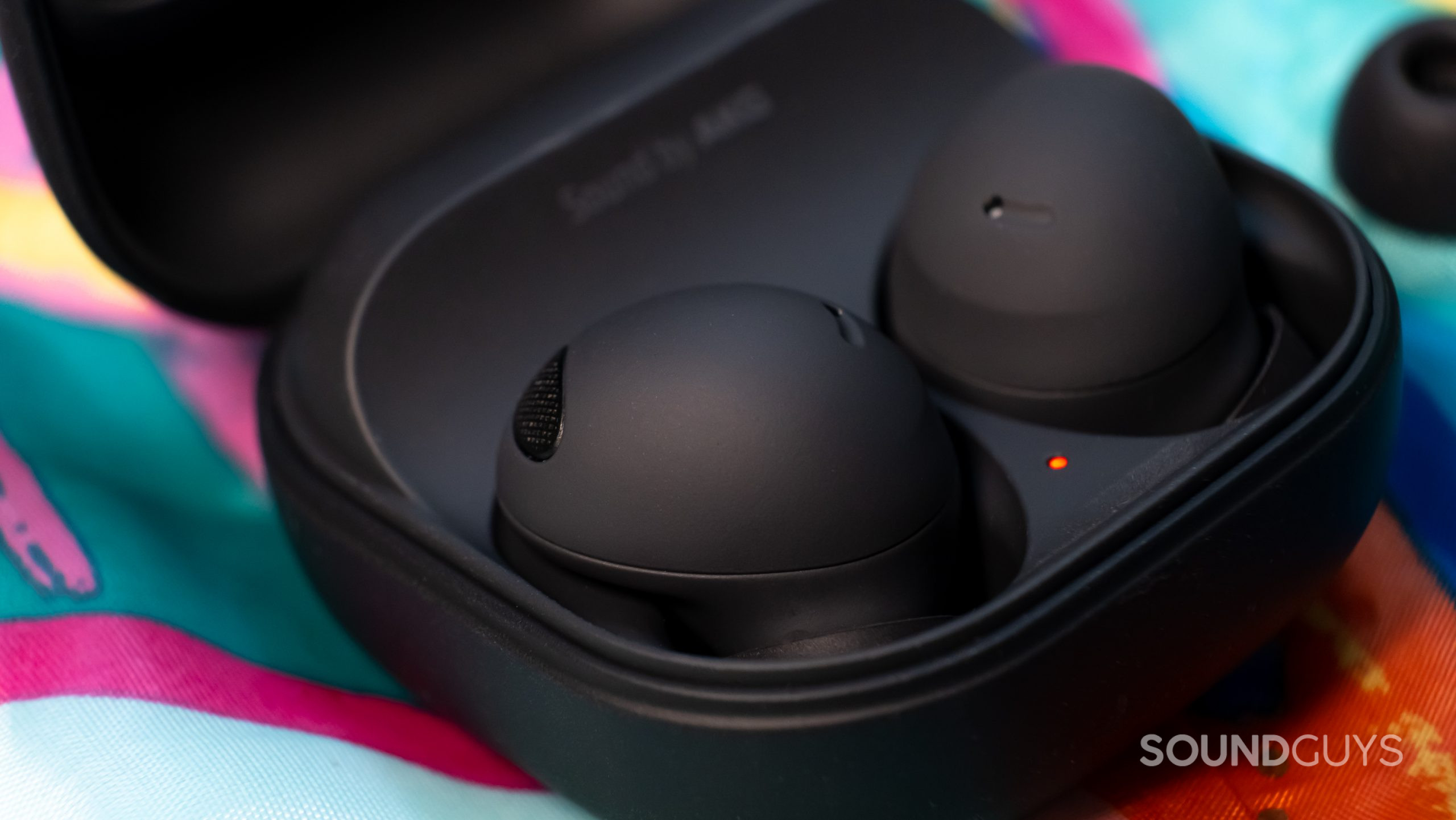
Both the Google Pixel Buds Pro and Samsung Galaxy Buds 2 Pro use the industry standard wireless connections AAC and SBC Bluetooth codecs. In addition, if you pair the Galaxy Buds 2 Pro with a Samsung device you can access the Samsung Seamless Codec for better quality audio.
It is a little odd that two wireless earbuds aimed at Android users only use AAC and SBC, particularly in the case of Pixel Buds Pro, which does not have any exclusive high-quality codec. They’re both required for Bluetooth 5.0 and higher, but AAC has been shown to work best with Apple products, and indeed both sets of earbuds have low latency over AAC with an iPhone. We would’ve liked to see something more Android-friendly, like aptX.
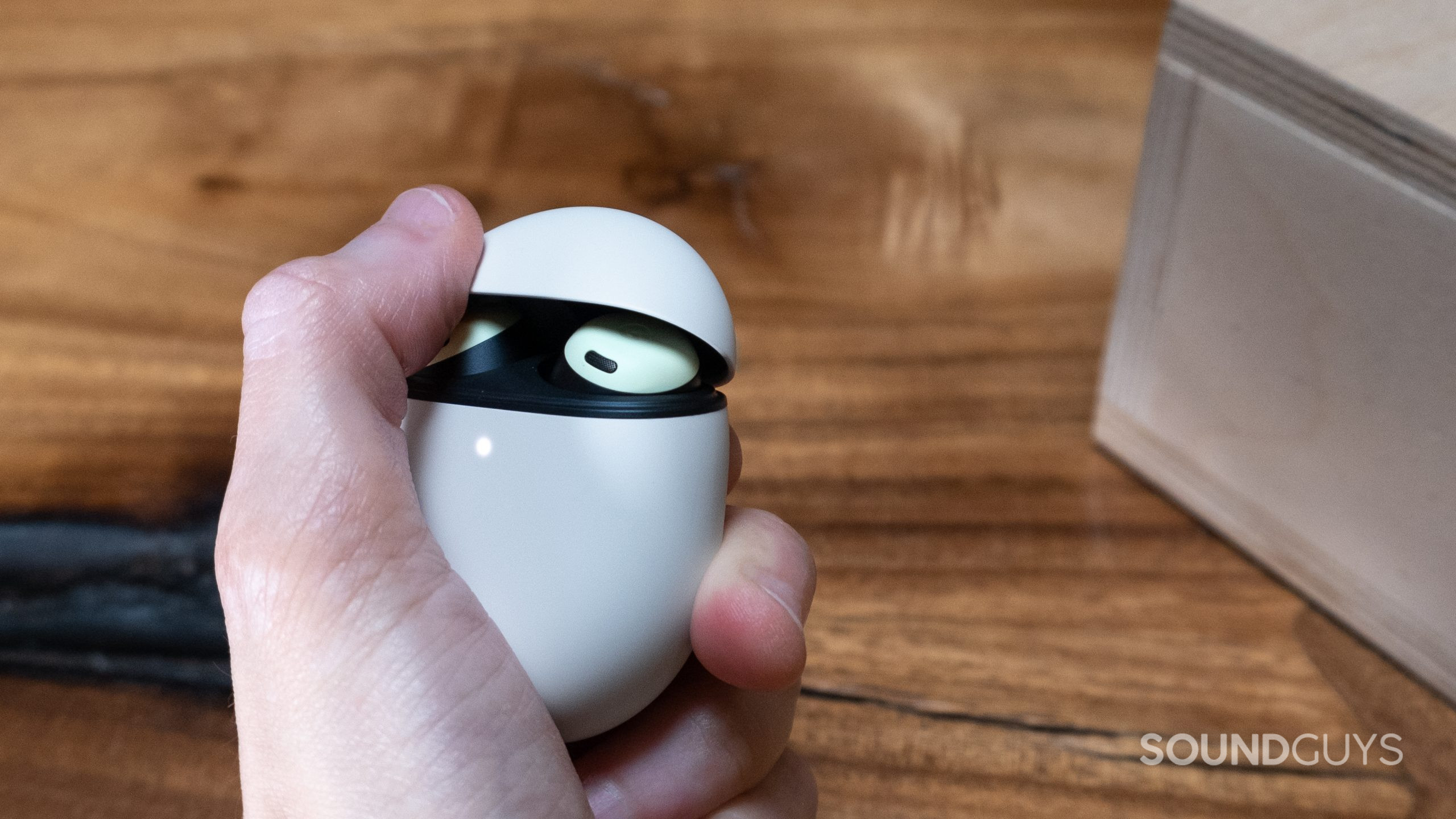
The Galaxy Buds 2 Pro uses the latest Bluetooth 5.3, meaning it will gain LE Audio compatibility. Although the Bluetooth 5.0 version on the Pixel Buds Pro is completely fine, it won’t support LE Audio when it rolls out. For these reasons and the added Samsung codec, the Galaxy Buds 2 Pro wins for connectivity.
Pairing the Galaxy Buds 2 Pro is dead simple. There are several methods depending on what you’re pairing with, but these steps work for all devices.
- Open the case and leave the buds in.
- Make sure Bluetooth is turned on on your device.
- Press your fingers on the touch panels of the Galaxy Buds 2 Pro until the light blinks red, blue, and green.
- Select the Samsung Galaxy Buds 2 Pro on your device’s Bluetooth settings.
Subsequent connections with the same device should happen immediately when you open the case and pluck out the buds. With a previously paired Samsung device, you might see a card pop up when you open the case asking if you want to pair the buds, even if the Bluetooth is set to off.
Bluetooth connection is pretty easy regardless of your device with the added luxury of Google Fast Pair.
- Open the case, leaving the buds in the case.
- Make sure Bluetooth is on in your phone settings.
- On Android, a notification will appear and you’re basically done. On an iOS device, press and hold the button on the case for three seconds.
- In your Bluetooth settings, select the Pixel Buds Pro. Now you’re connected.
Is battery life better on the Samsung Galaxy Buds 2 Pro or Google Pixel Buds Pro?
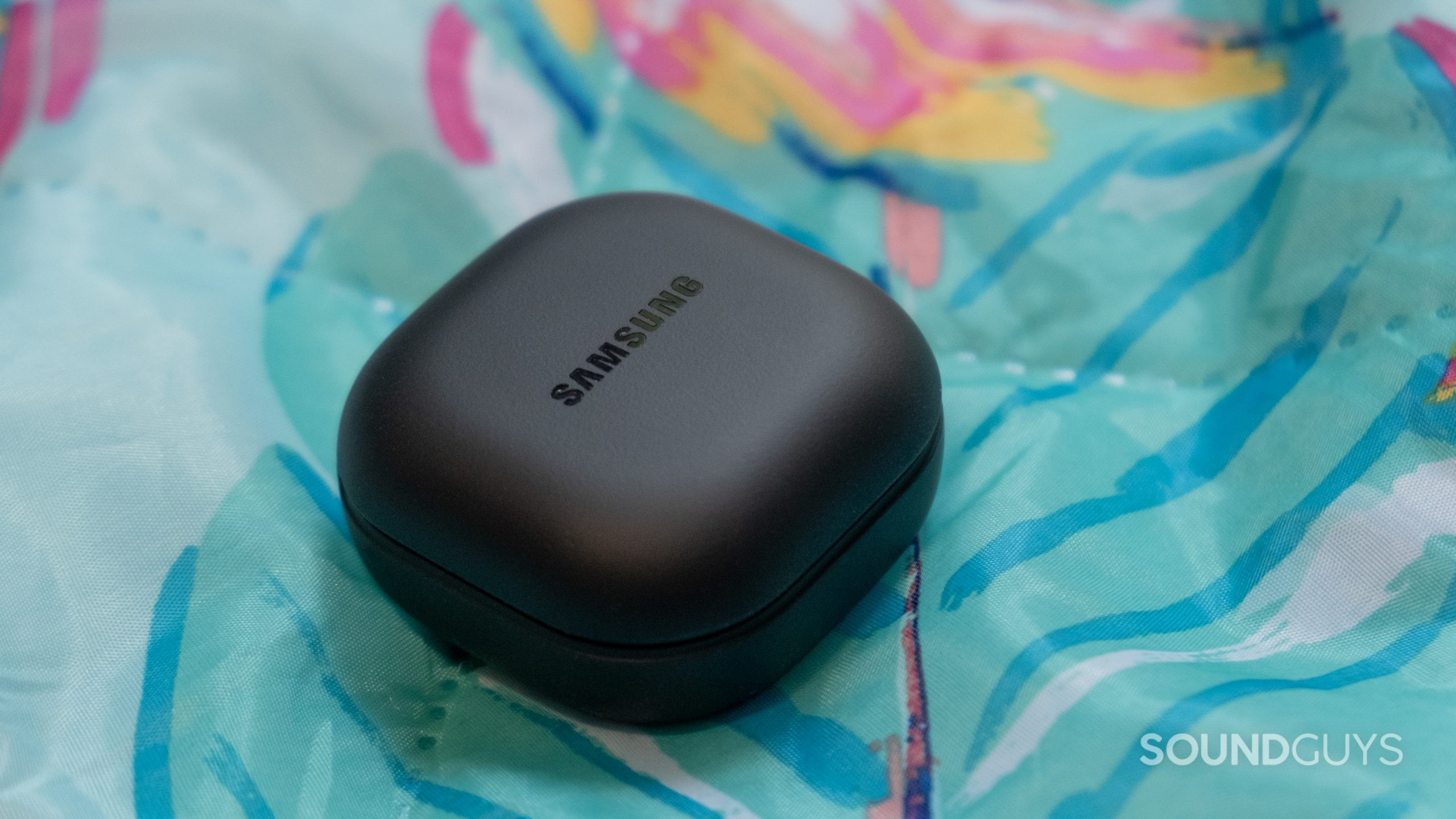
Sporting a superior battery life, the Google Pixel Buds Pro lasts 7 hours and 6 minutes with ANC on. Using the same standardized testing method, consisting of constant music playback peaking at 75dB(SPL), the Galaxy Buds 2 Pro lasts 4 hours and 50 minutes. Requiring fewer charging cycles than the Samsung Buds to achieve the same playback time, the Pixel Buds Pro may last a little longer down the line.
Otherwise, both battery cases charge via USB-C or wirelessly with a Qi pad. Samsung includes the Wireless PowerShare function; this requires you to have a Qi-compatible phone to charge the buds.
Does the Samsung Galaxy Buds 2 Pro or Google Pixel Buds Pro block noise better?
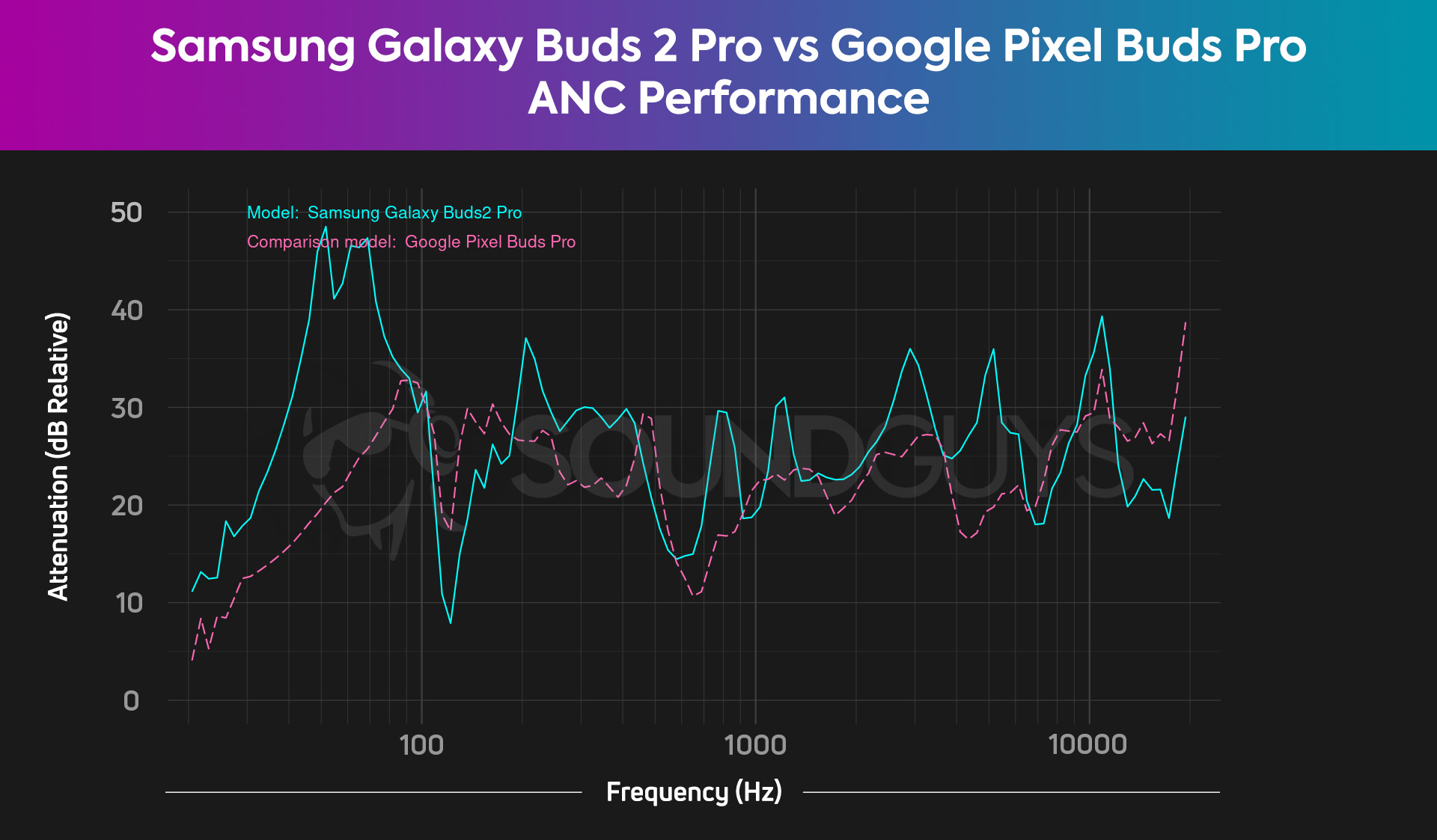
One of the greatest strengths of the Samsung Galaxy Buds 2 Pro lies in its excellent active noise canceling performance. The Google Pixel Buds Pro has very respectable ANC tech, but particularly in the lowest frequency regions, it can’t keep pace with the Galaxy Buds 2 Pro. In addition, vents present on both sets of earbuds act to relieve in-ear pressure caused by noise canceling.
More comparable are the isolating qualities of each set of buds, however, even here Samsung mostly outdoes the Pixel Buds Pro as well. So while Samsung wins for better noise canceling, both wireless earbuds will help keep your volume at a safer level to prevent noise-induced hearing loss.
Does the Google Pixel Buds Pro sound better than the Samsung Galaxy Buds 2 Pro?
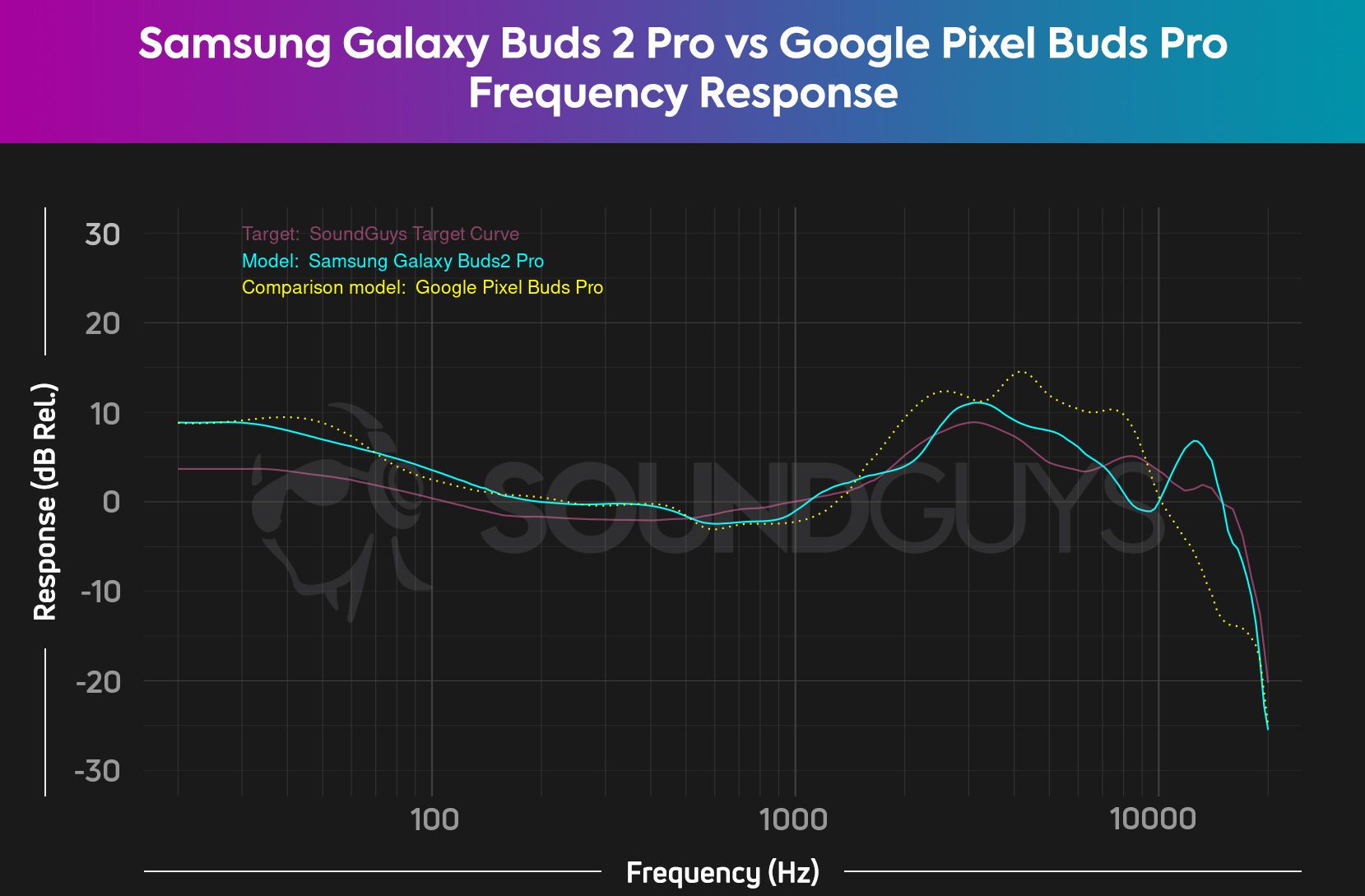
Our tests show both sets have nearly identical tuning below 1000Hz, exaggerating bass by around 5dB, with the Pixel Buds Pro bumping it up a couple decibels more around 40-60Hz. Also, compared to our headphone preference curve, both marginally under-emphasize the 500-1000Hz region. Still, Samsung and Google’s frequency responses roughly follow the gist of our target curve there, and it helps to know these differences and similarities when deciding on a purchase.
In the high end, except for the volume roll-off at 10kHz, the Google Pixel Buds Pro is louder than the Galaxy Buds 2 Pro. The Pixel Buds Pro could border on harsh for some listeners, depending on the content. In contrast, the Galaxy Buds 2 Pro delivers a saner amount of treble in its frequency response, and features a volume dip between 7-10kHz, and then a boost above 10kHz. Less happens above 10Khz in terms of content, so while it’ll affect your audio, it won’t be as obvious as the over-amplified treble frequencies on the Pixel Buds Pro.
You could describe these EQ presets for the Samsung Galaxy Buds 2 Pro as variations on a theme, considering they aren’t vastly different. For instance, any preset that allows you to reduce the 10kHz bump on the Galaxy Buds 2 Pro simultaneously reduces the already under-emphasized volume between 7-10kHz. It’s worth cycling through each to see if one suits your tastes more, but a manual equalizer would be better.
No, the Volume EQ does not make the earbuds sound better. Google describes the Volume EQ function as turning up treble and bass as you turn down the volume. There’s a kind of logic at play here, meaning it should make the sound of the earbuds more consistent across volume steps by compensating for how our hearing works. For the person who always turns up the volume to hear more bass, maybe you’ll be less tempted. In use, we didn’t track much difference and at our testing level found the frequency response to be the same as the normal listening mode.
Does the Samsung Galaxy Buds 2 Pro or Google Pixel Buds Pro have a better microphone?
Neither microphone is the most accurate, but both work just fine for meetings. The Samsung Galaxy Buds 2 Pro in ideal conditions sounds more or less fine, but can cause some voices to sound as though they have a lisp, and exaggerates plosives (p sounds). It rejects wind noise fairly well.
The Pixel Buds Pro noise rejection works okay, but can sometimes cut your voice out completely with heavy wind, so maybe avoid mid-windstorm Zoom meetings. Higher voices tend to fare worse with some sibilant (s sounds) exaggerations, as well.
Samsung Galaxy Buds 2 Pro microphone demo (Ideal conditions):
Google Pixel Buds Pro microphone demo (Ideal conditions):
Samsung Galaxy Buds 2 Pro microphone demo (Windy conditions):
Google Pixel Buds Pro microphone demo (Windy conditions):
Which microphone sounds better?
Editor’s note: Our standardized test setup plays back pre-recorded phrases from a calibrated artificial mouth in our test chamber, either with or without simulated background noises, simulated reverberant spaces, or artificial wind. This means that samples from every product can be directly compared, which makes it far easier to make meaningful comparisons between products in terms of the raw speech quality or the product’s ability to reject noise. While this setup is consistent, it’s unable to allow the earbuds to detect speech as they would in the real world (using vibrations), so you’re likely to experience something different than our demos above.
Should you get the Samsung Galaxy Buds 2 Pro or Google Pixel Buds Pro?
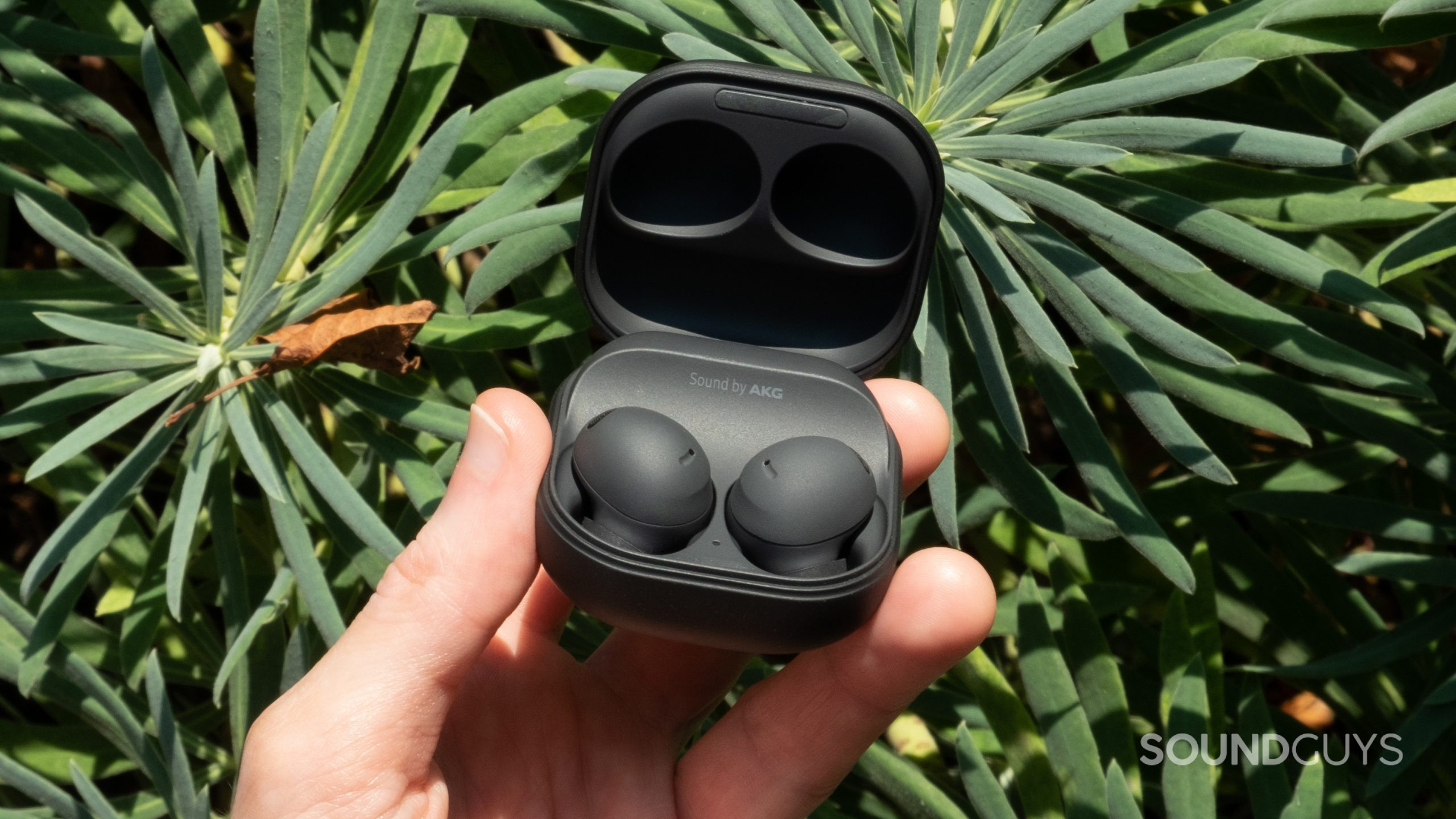
Unless you have a Google obsession or need earbuds for constant playback exceeding 5 hours, you ought to pick up the Samsung Galaxy Buds 2 Pro. This is especially true for Samsung phone owners who can access the Samsung Seamless Codec. The Samsung buds sound better and cancel more noise than the Google Pixel Buds Pro. It also happens to be on our best noise canceling wireless earphones list.
Both sets of earbuds are comfortable, but the Samsung Galaxy Buds 2 Pro earphones fit and feel better. Plus Samsung’s buds have a superior IPX7 rating compared to the IPX4 on the Google buds. Granted, the Pixel Buds Pro has a better charging case with IPX2 protection and a more pocketable shape. You also get a longer standalone battery life out of the Pixel buds Pro.
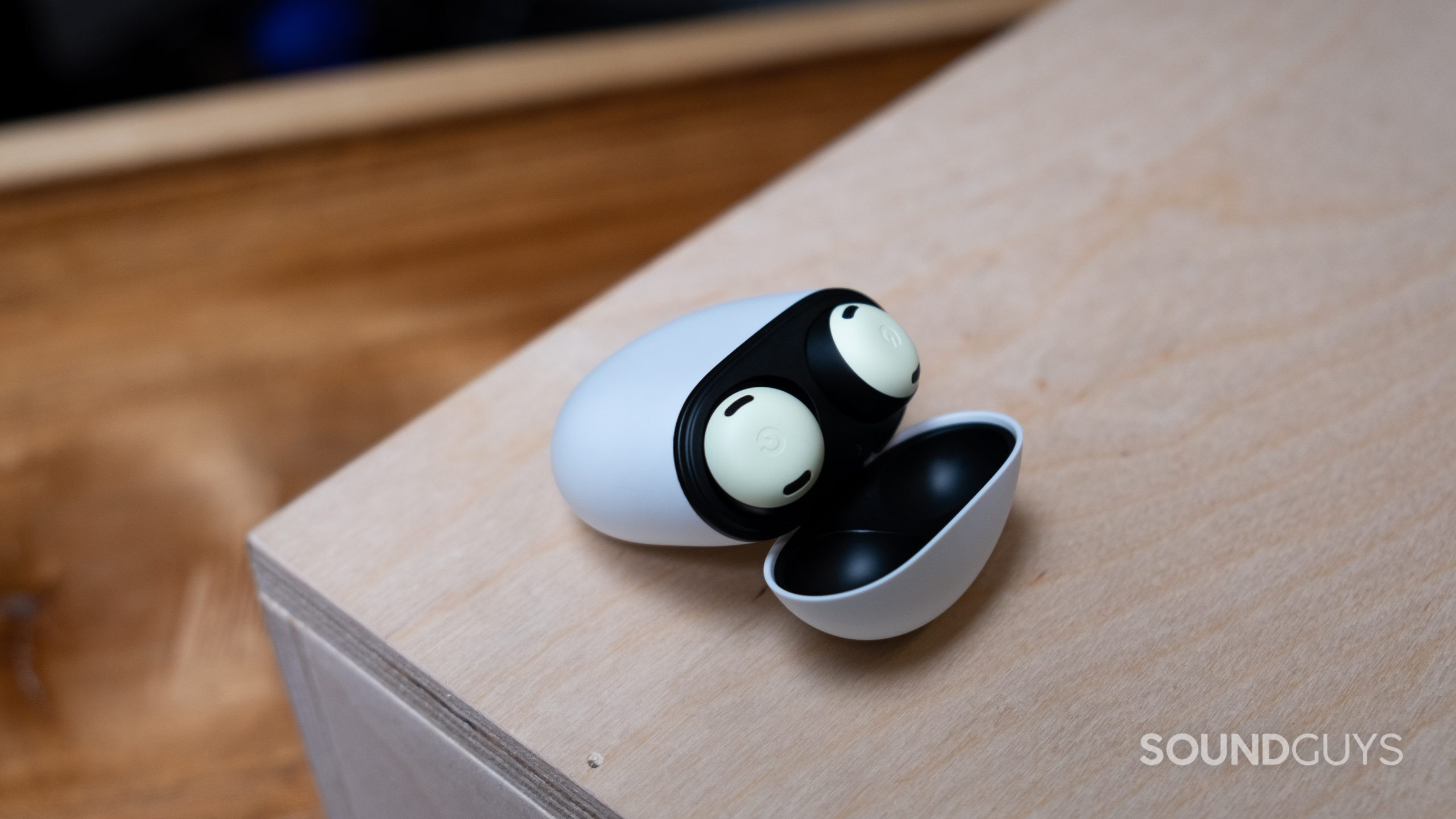
Most of what you buy when you get either of these great wireless earbuds is the companion software. Both apps have similar functionality and limitations, even down to control remapping. Even considering prices jump around a lot for Samsung, and Google is pretty fixed, you might as well go for the Galaxy Buds 2 Pro for its better sound and ANC, unless you need a better battery life and Google Translate.

Enhanced noise-cancelling technology
Satisfying battery life

Android integration
Google Assistant features
What should you get instead of the Samsung Galaxy Buds 2 Pro and Google Pixel Buds Pro?
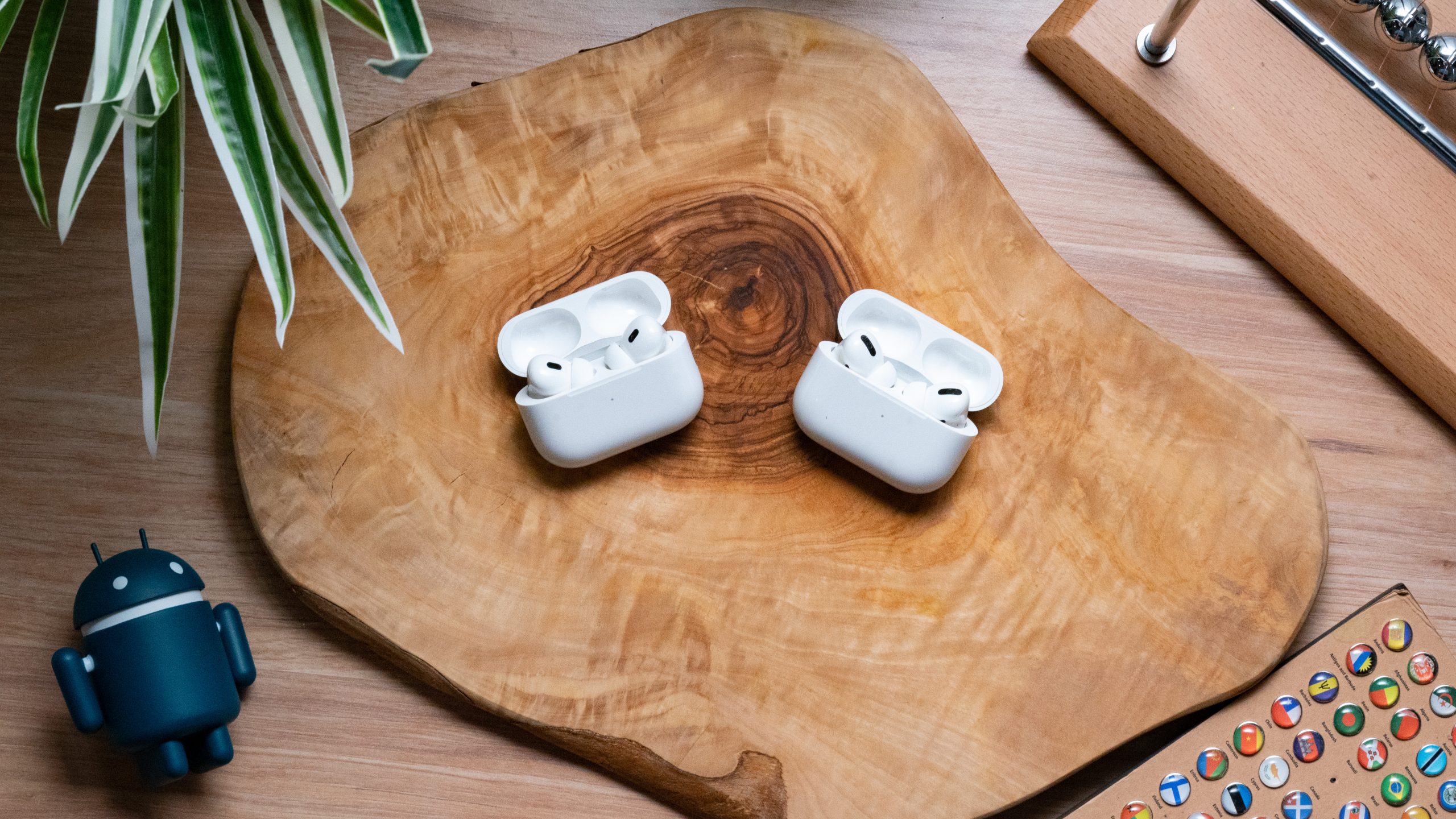
First off, don’t buy either of these earbuds if you have an iPhone. You won’t have access to most of the Samsung and Google features because you miss out on the apps. Instead, iPhone owners, just jump right to the Apple AirPods Pro (2nd generation) ($239 at Amazon) for the smoothest experience on iOS. If you don’t mind missing a few features like a speaker built into the charging case, you can grab the Apple AirPods Pro (1st gen) instead (on the product’s website); it compares very well against the 2nd generation.
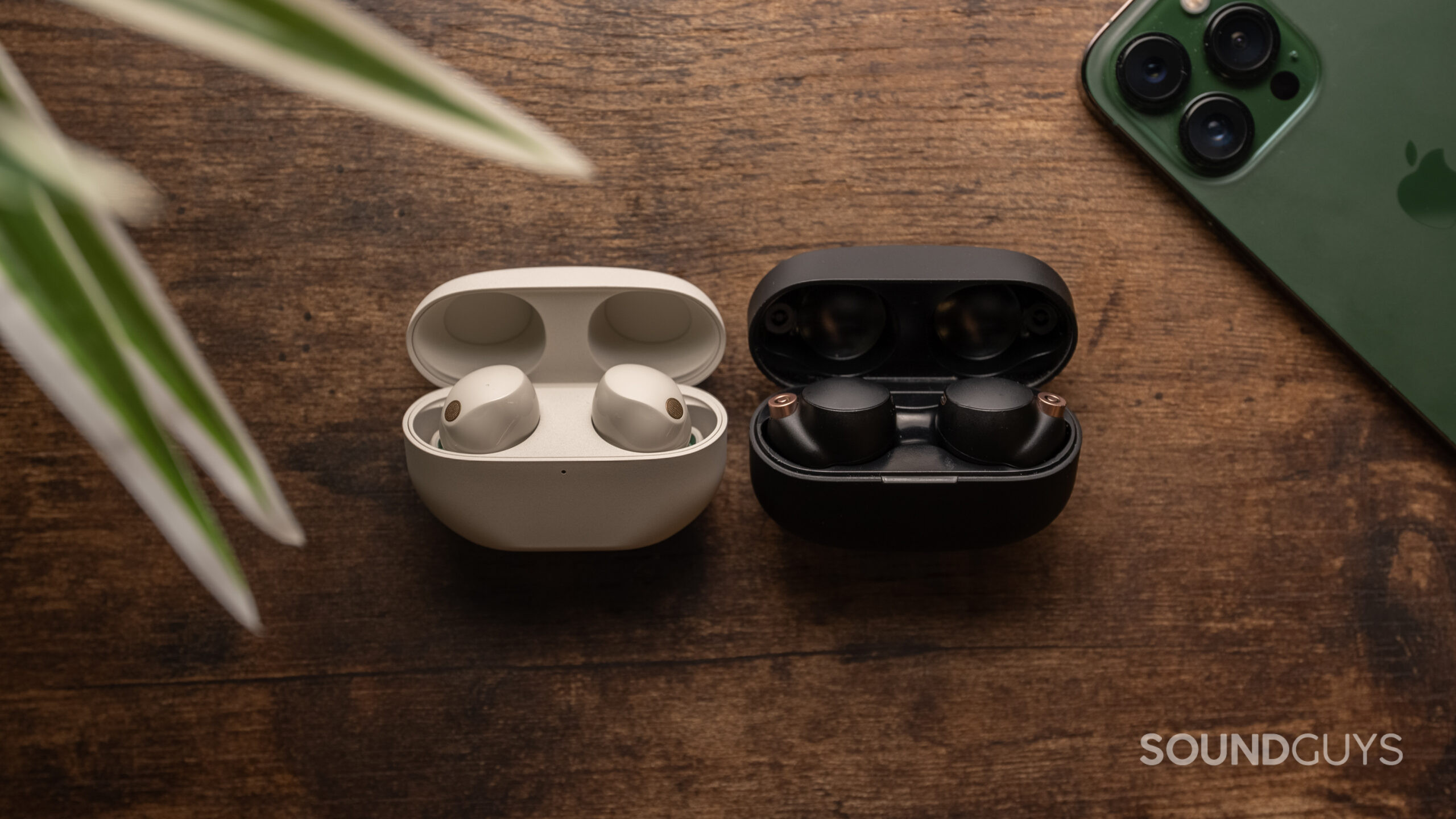
Those who switch between operating systems, go ahead and pick up the Sony WF-1000XM4. Sony’s buds have great ANC, 360 Reality Audio, and a more granular equalizer in the app. Android owners can use the LDAC codec and don’t need a special phone for the WF-1000XM4 either, hurray. Granted, it was more expensive when released, but has gone down a bit ($278 at Amazon).
The introduction of the even newer Sony WF-1000XM5, which updates the battery life, noise canceling, and slims down the previous iteration, is a solid alternative to the Galaxy Buds 2 Pro and Pixel Buds Pro. These are a bit costly ($198 at Amazon), but for the latest tech from Sony that might be worth the entry fee.
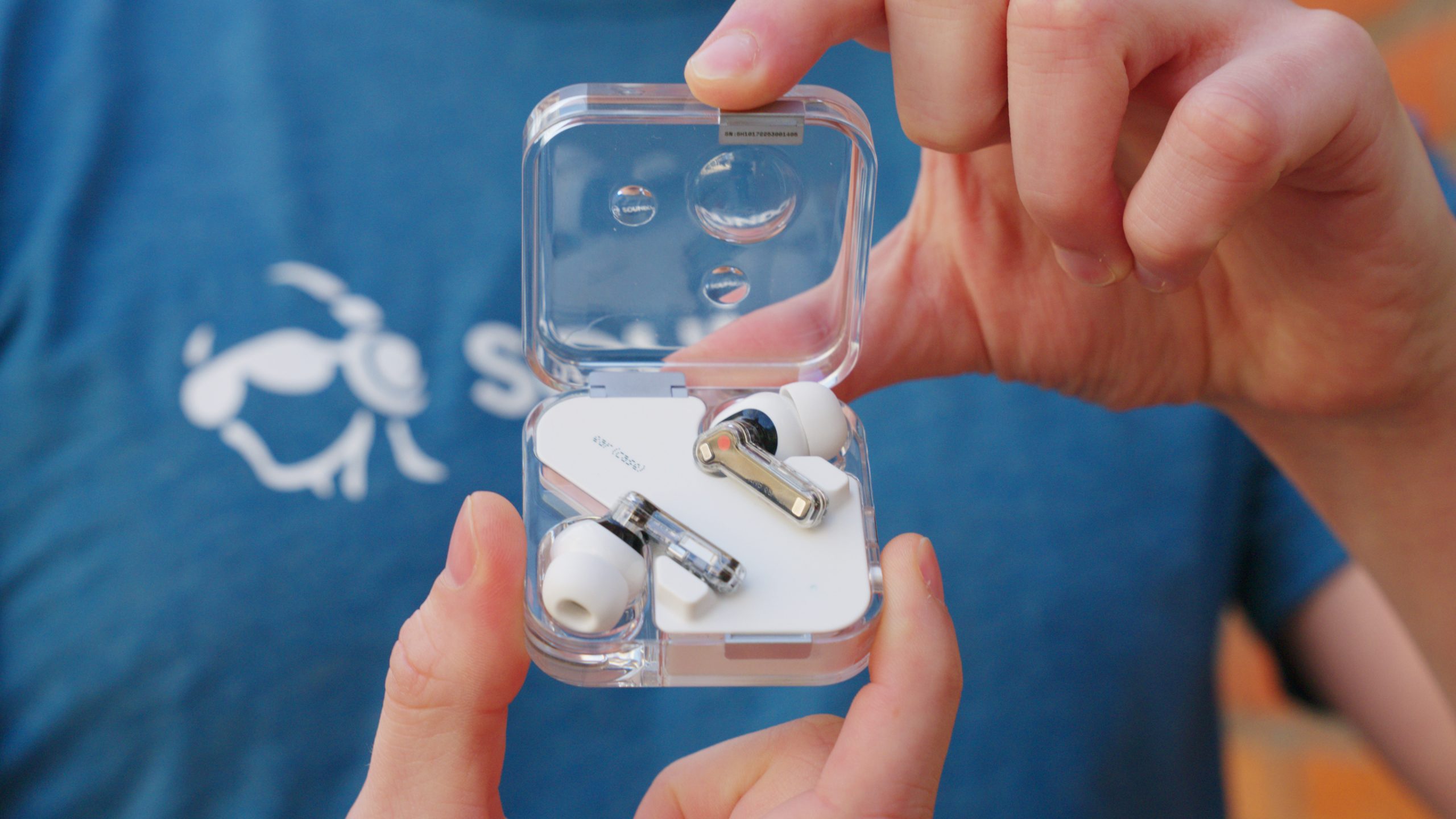
If you want a solid connection, some ANC, and don’t care for spatial audio with head tracking, there’s the Nothing Ear (2). No need here to make sure you have the Nothing Phone 2 to get features, as needed for Google and Samsung earbuds. You get the LHDC 5.0 codec, provided you’ve got Android 10 or later to potentially get up to 24 bit/192kHz audio, similar to the Galaxy Buds 2 Pro’s Samsung Seamless Codec. iOS users still get the AAC codec too. While the noise canceling doesn’t outdo the Pixel Buds Pro or Galaxy Buds 2 Pro, it’s very consistent in its implementation. For $149 at Amazon it’s worth a look.
Frequently asked questions
Fit is highly individual. However, there are some broad strokes we can cover that might suggest the Galaxy Buds 2 Pro generally fit more people better than the Pixel Buds Pro. First off, the Samsung earbuds are covered in a grippy texture to promote staying in place. Secondly, the Pixel Buds Pro dropped the successful stabilizers from the Pixel Buds A-Series, and so the Google Pixel Buds Pro tend to rest inside your ears, rather than fit in. This makes them comfortable when you sit at a desk, but not especially secure fitting. There are outliers though and anyone who found the older Samsung Galaxy Buds Pro didn’t stay put should probably steer clear.
Yes, you can get 360 audio, also known as spatial audio and surround sound on the Samsung Galaxy Buds 2 Pro. You can also use head tracking.
People who use hands-free assistants can use either of these earbuds. The Pixel Buds Pro defaults, unsurprisingly, to Google Assistant. With Google’s earphones, you can enable direct voice access to the Google Assistant from any Android phone. Direct voice access to Bixby with the Galaxy Buds 2 Pro, however, is limited to compatible Samsung devices. You can change the assistant to Google Assistant or Amazon Alexa with Samsung’s buds, but you’ll need to reconfigure and interact with the touch panels to “wake” the non-Bixby assistant.
Yes, you’ll need a Samsung Galaxy phone running One UI 5.0 or newer. Currently only the Samsung Galaxy S23, S23+, S23 Ultra, Galaxy Z Flip 4, and Galaxy Z Fold 4 support this feature. You’ll need to enable it in the camera settings and then use each earbud to create a binaural recording.